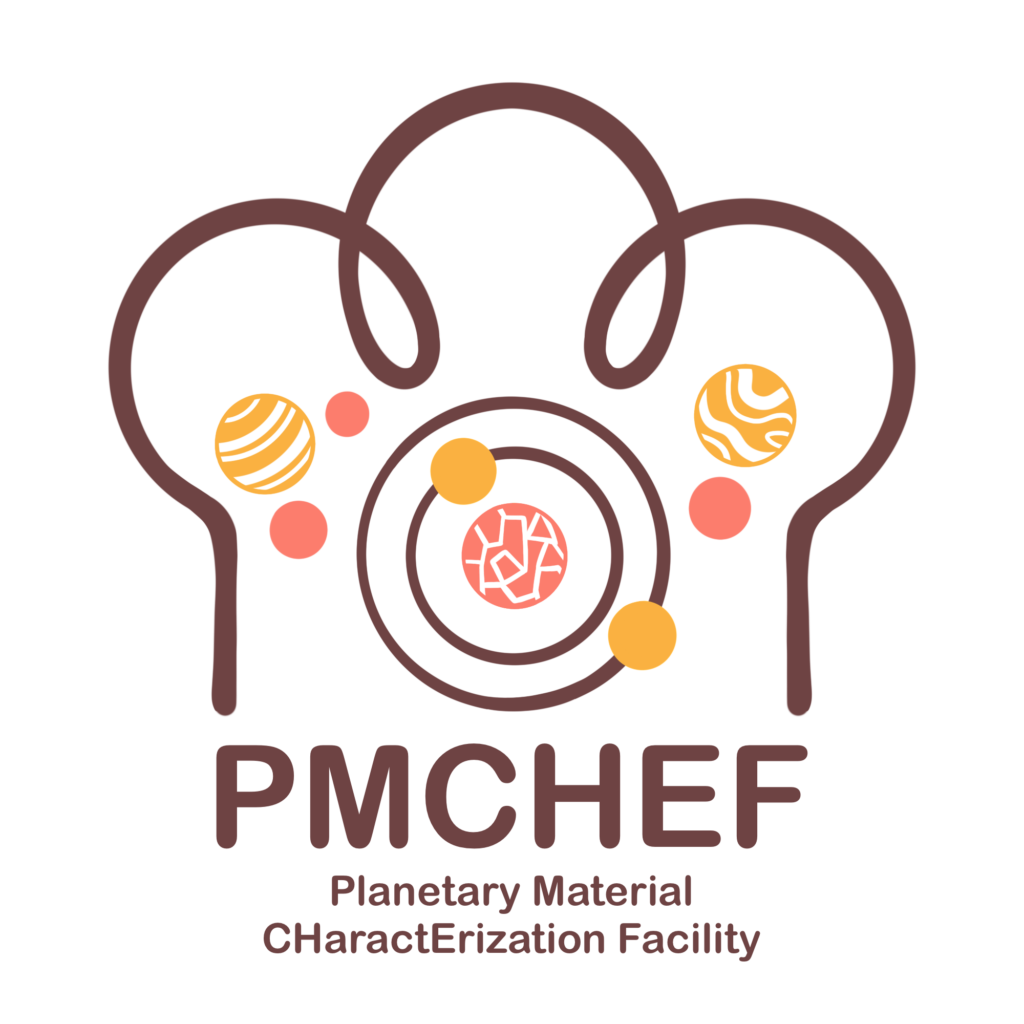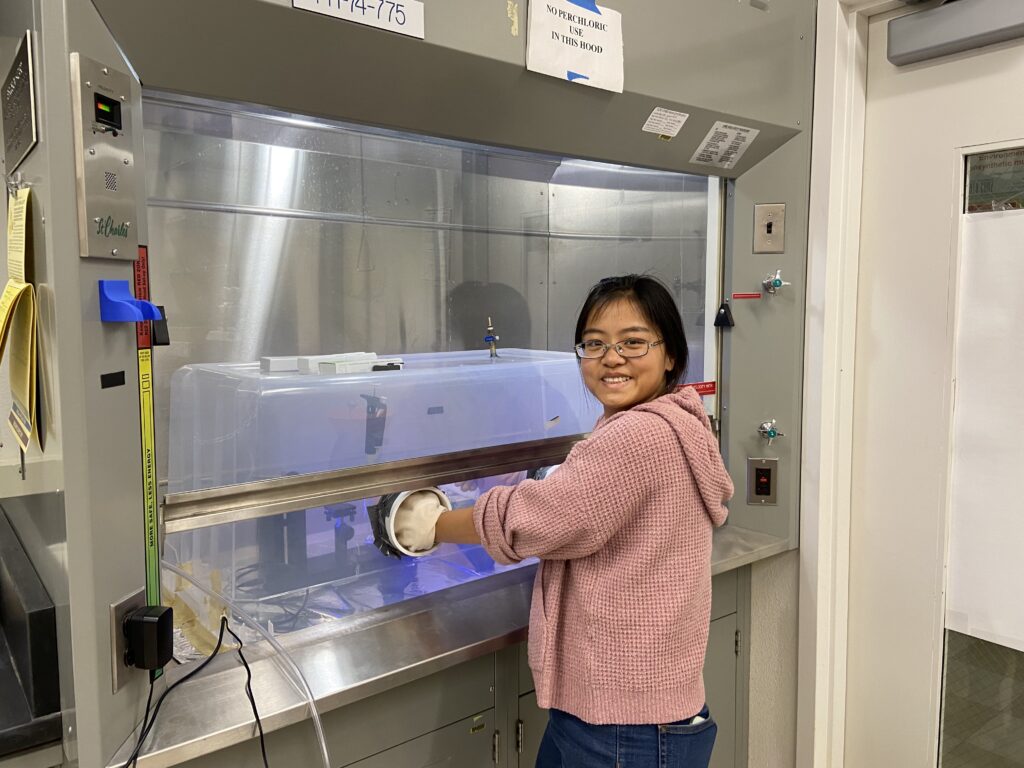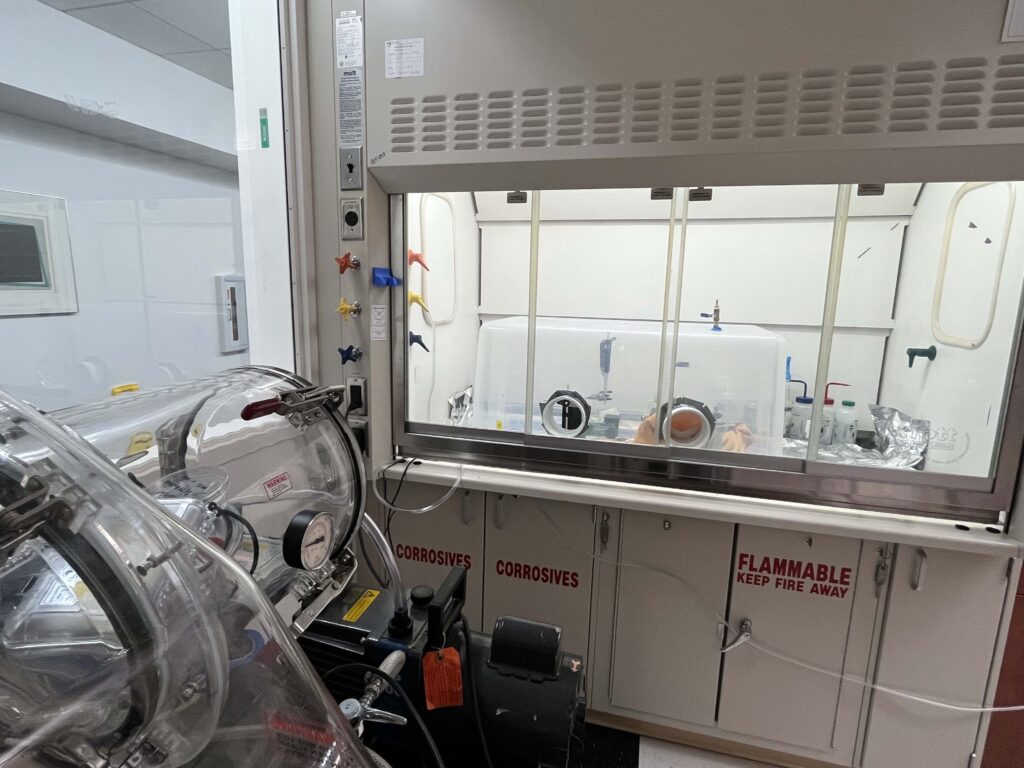Welcome to my lab! It is located in the Applied Engineering and Technology (AET) Building of the University of Texas at San Antonio. As a faculty member of the Department of Physics and Astronomy of UT San Antonio, I am currently building the Planetary Material CHaractErization Facility (PMCHEF), funded by the NASA Planetary Science Early Career Award.

Thanks to the discretionary funding of the 51 Pegasi b postdoctoral fellow, I was able to build a few pieces of homemade, low-cost equipment to conduct planetary and exoplanetary material characterization experiments at UC Santa Cruz and brought them to UTSA.

The laboratory is equipped with a chemical fume hood, vented cabinets for flammable liquids, multiple vacuum desiccators for sample storage, a Satorius Entris II Essential Analytical Balance, a drying/sterilizing oven, a Fisherbrand analog vortex mixer, and all other facilities required to safely and successfully complete the characterizations needed for planetary/exoplanetary relevant materials.

Specific instruments for material characterization include 1) an Ossila contact angle goniometer and tensiometer, which can be used to measure the surface tension of liquids through the pendant drop method and surface energies of solids through sessile drop contact angle measurement using test liquids of different surface tensions. The goniometer is housed in a homemade glove box, and the measurements are conducted in a dry nitrogen environment to minimize the effect of water vapor and hydrocarbon contaminants from ambient air, 2) a Mitutoyo Surftest SJ-210 surface roughness tester with a 2 µm stylus, which can be used to characterize micro- and nano-scale surface profiles and roughness of solid samples. Both instruments are portable and can be moved to other locations if samples need to be investigated at other laboratories or in the field.
More instruments are on the way! I am acquiring the following systems as part of the family of the PMCHEF, including 1) a J. A. Woollam ellipsometer system (M-2000 and IR-vase) for measuring the optical properties of thin-film samples from the UV to the mid-infrared (190 nm to 30 µm); 2) a KLA iMicro nanoindenter for measuring a range of mechanical properties of small amounts of samples (elastic, plastics, and fracture properties); 3) an atomic force microscope that can measure the surface and electrical properties of small amounts of samples, including cohesion, adhesion, tribocharging, and dielectric properties. All three instruments will be housed in dry-nitrogen purged glove boxes from MBraun, with less than 1 ppm of water vapor and less than 1 ppm of oxygen, to avoid contamination and degradation of the samples and to make sure the air contaminants minimally affect the surface properties of the samples.
